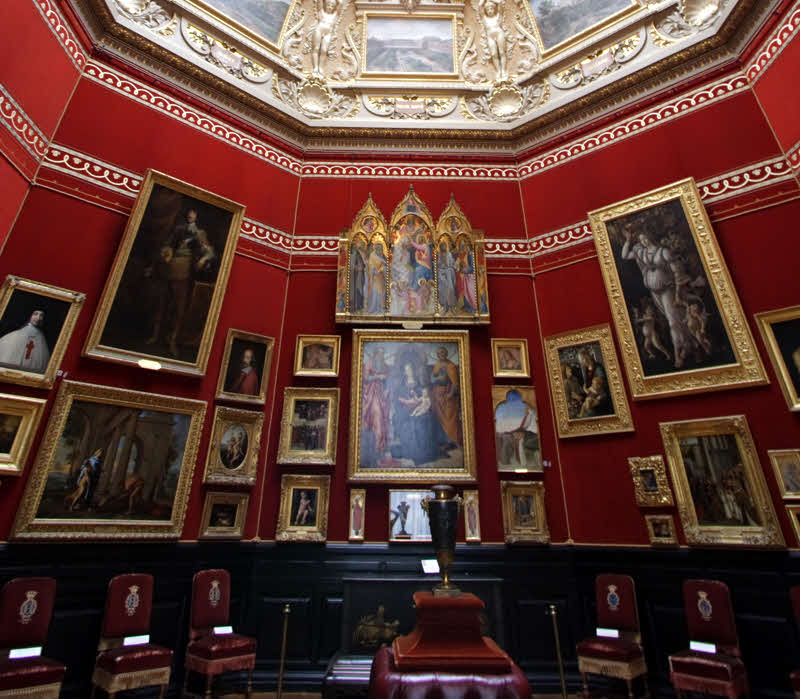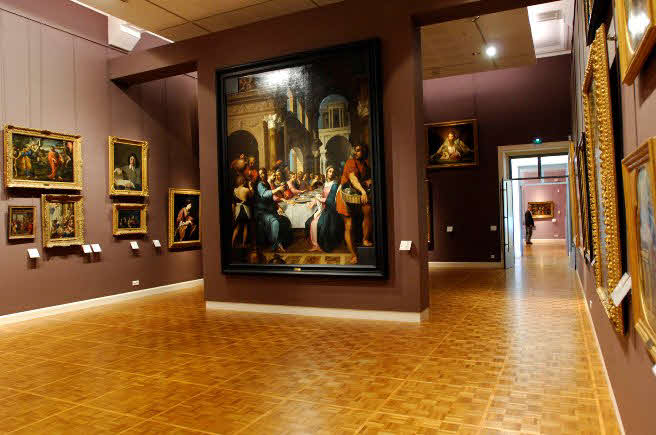|
Plinio Corrêa de Oliveira
Are Museums Sepulchers for Culture?
"Catolicismo" N. 153, September 1963 (*) |
|
|
Who has not felt the frustration that typically assails one after visiting a large museum? Wandering through the rooms and galleries where rare objects and masterpieces are exhibited, the soul expands and is enriched by the contemplation of a thousand marvels. Yet, at the same time, a sensation of emptiness, unnaturalness and outrageous artificiality permeates the depths of the soul. And that sensation explodes after the visitor has viewed the final selection and finds himself once again on the street, reinstated in a modern environment. Since one searches either consciously or unconsciously for a point of unity around which one can rationally integrate all one has seen, there is a strong feeling that this point of unity does not exist. Thus, the person feels immense chaos within himself. And since human nature, in its better aspects, has a horror of chaos, the result is that the museum begins to appear as an inhuman and repelling garbage heap filled with the splendors of all centuries. These souls feel the way their eyes would, if instead of beholding customary people and things in their calm and orderly everyday activities, they would see everything illuminated by strong strobe lights that flash on a frenetic dance floor. An Egyptian sphinx, Pasteur's cane, a Canadian Indian fetish, Catherine de Medici's mirror…and other very interesting and very incongruent things are exhibited along the miles of walls. How can the soul feel anything but this horrible sensation of incongruence? Obviously, the incongruence is not in each object considered individually but rather when considered as a whole.. On the contrary, each object is usually a model of congruence, harmony, grandeur or charm when considered in the context for which it was originally designed and created. However, it acquires an incongruence in the dazzling "garbage heap" of the museum.
Most 19th century museums have this lamentable aspect of chaos. An example would be the Museum of Chantilly, which was bequeathed by the Duke d'Aumale to the Institute of France. In this mansion, celebrated in the annals of the Ancien Regime, one would hope to find the atmosphere of the courtly life of the Princes of Condé. One cannot step into Chantilly without recalling the brilliant past inhabitants and historic episodes that unfolded within its walls. The Duke d'Aumale, however, converted a large part of the castle into a large art gallery - a veritable storehouse - where one picture follows another without any order or charm. Randomly placed and tasteless 19th century furniture invites the visitor to sit and rest. To rectify this problem, some newer museums began to group pictures and other pieces according to epoch or under some theme. This affords a certain sensation of order. This was done, for example, in the Museum of Fine Arts in Rennes.
Undoubtedly, there is more order in this museum than in Chantilly. It is a very orderly storehouse. Nonetheless, it continues to be a storehouse. These pictures were made for churches, family mansions, cathedrals and palaces and they only look proper in the places for which they were made. This is also true for masterpieces in other genres not shown in the picture. Outside of its natural habitat, a work of art usually loses its "life" and becomes like the dried and dead herbs and flowers in a botanical museum. Thus, the real solution for organizing these museums would be - to empty them. Not of everything but of quite a bit. The objects could then be reinstated in their proper ambiences and would become more comprehensible and natural. * * * The genius of a saint saw what so many "specialists" do not see. This is what Pope St. Pius X thought about museums according to an account by Cardinal Merry del Val: "Museums and galleries of art are undoubtedly necessary for the preservation of valiant heritages; if these were lost or destroyed, they could never be replaced. However, we consider such institutions somehow inadequate and would willingly have them replaced with something else. We sustain the idea that the artistic and historical works of art should remain in the places for which they were created. To displace them frequently distorts the purposes for which the artists intended them. Even more, in our opinion, distributing these inspired works of human genius throughout a country would be one of the best means of cultivating the people's taste and of awakening natural gifts of other possible artists. "When this lesson can only be learned from the privileged walls of a museum in a large city on the infrequent occasions that they are visited requiring expenditure and inconvenience, then actually only a few people benefit. As a consequence of this tendency of our times, the gradual process of an unconscious assimilation of culture that prevailed in the past no longer exists." (Memoirs of Pope Pius X, by Cardinal Merry del Val, pp. 79 -80.) (*) The preceding article has been translated and adapted for publication without the author's revision. –Ed. American TFP. |
|



